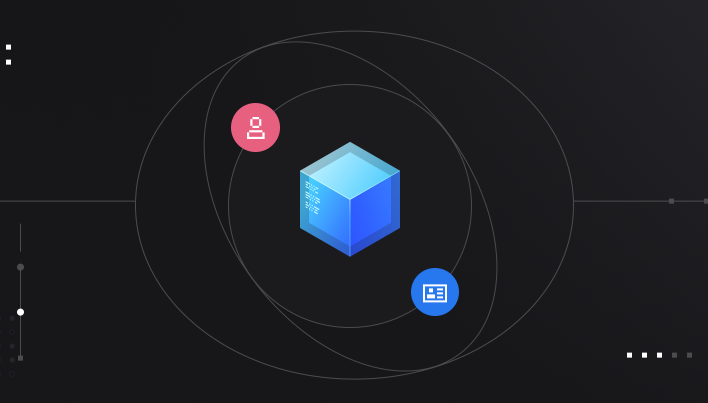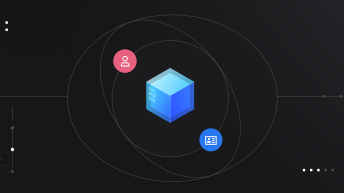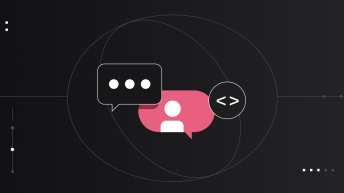Alessio Treglia: Stepping in as CTO of Jur and Shaping the Future of Web 3.0
This article marks the first instalment of an engaging conversation between Stuart (AKA the Wordsmith) and Alessio Treglia, the newly appointed Chief Technology Officer (CTO) at Jur. In this insightful discussion, they delve into Alessio's fascinating background and his alignment with Jur's mission and governance philosophy, as evident from his insights on the importance of governance and its role in building successful organisations. You can explore the continuation of this enriching dialogue between Stuart and Alessio in the second part here.
Jur – a leading name in the decentralised technology world – has put its best foot forward with the appointment of Alessio Treglia as its new Chief Technology Officer (CTO). Known for his profound expertise in blockchain technology and governance, Alessio brings an innovative vision to his new role. To introduce him to the community, he took part in an in-depth interview with popular industry writer and journalist Stuart M (AKA the Wordsmith), where the two spoke in depth about Alessio's ideas and the strategic direction he plans for Jur in the vibrant Web 3.0 ecosystem.
At the start of the interview, Alessio shed some light on his personal history and professional background. Starting his journey in software development at a very young age, Alessio highlighted the influential role that open-source played in his career development: "I started making software when I was a kid,” he explained. “I was very little and I started with open source. For me it was a means by which I could learn about systems and technology."
Alessio further expanded on his career trajectory, explaining his transition from software development to working as a consultant for various non-government organisations and foundations. His early experiences were not just confined to software development however; he was also part of influential open-source projects. “[After University] I was working, and living in Italy – I'm from there originally – as a contractor, and as a consultant for a lot of non-government organisations and foundations,” he told the Wordsmith. “I was making a lot of software, collaborating with companies like Ubuntu, Debian. [These were] perhaps the very first open-source projects that I started collaborating with." Certainly Alessio’s reveal of his association with projects that represent stalwart pillars of the open-source world, also subtly showcased a great deal about his competency and passion for technology – as well as being no stranger to working on complex, large-scale, and influential projects.
However it was his move to London that Alessio's feels allowed his career to undergo a dramatic transformation. The city’s diversity offered him an expansive landscape to explore and learn, far beyond his previous experience as a systems developer. He recalled how, "Coming to London… gave me the possibility to experience quite a diverse set of things…I started to work on so much more." This period of his career saw Alessio dip into multiple sectors. In 2013, Alessio served as an engineer for one of Facebook's strategic partners, where they launched one of the first products that leveraged Facebook FBX for retargeting technology. Alessio then evolved to become a specialist Linux engineer, with the position allowing him to apply his technical skills in a different domain and further broadened his growing expertise. Ever curious, Alessio continued to evolve, moving on to the sports gambling industry, where he developed algorithms for making betting predictions, before becoming both a consultant and vice President of Engineering for various top-level companies.
Some time later Alessio found himself in the financial sector – specifically markets operations technology, humorously remarking how, “the funny thing was I didn’t know much about finance.” This didn’t last long however, and after gaining a ton of experience in the sector, Alessio moved over to Blockchain technology, which he felt was “the natural next step.” After meeting some influential figures in the space – such as Jae Quon, founder and CEO of Tendermint– Alessio became once again curious about development. Indeed Alessio enjoyed a 4 year tenure at the company – a lifetime in the rapid-paced sector – first as a consultant and working his way right up to CTO, during which he actually created the first financial proof of concept application model based on Tendermint Core.Impressive stuff indeed.
This glimpse into Alessio's background is illustrative of his commitment to technology and collaboration, both of which have prepared him for his new role as CTO of Jur. Indeed it was fortuitous for Jur that after leaving Tendermint and having burned the candle at both ends for many years – that Alessio took a well-earned rest, using the time to study and decompress – and actually learned about the project, which piqued his interest due to it being reminiscent of much he had learned in the financial sector. “The main subject [there] is governance…and when you build a business, governance is crucial, it’s a pillar,” Alessio explained. “You can’t build a financial organisation or a tech company without having a governance that makes people incentivised to stick together…and deliver value,” He then added with a laugh, “that’s an almost twenty year career, condensed into four minutes.” Certainly Alessio’s viewpoint on governance is spot on with both the individualistic and collaborative values that Jur’s Startup Societies and Network States hold – being a core tenant of the project’s ethos.
The pair then discussed Alessio’s contributions to Tendermint in more detail, and the new CTO recounted one challenging yet pivotal period that was completely transformative for the company. "Back in 2021, the organisation was going through changes. A number of sub-companies formed, people left to join other organisations to work on what they wanted," he recalled. At that point, he was among the few remaining engineers. But this unique scenario presented Alessio with an unprecedented opportunity. He elaborated, "I was given the possibility to experiment, to try to build a team from the ground up. I had never been in that position before, I must admit." With this, he brought to bear his philosophy on nurturing high-quality individuals, understanding that good engineers can learn and adapt. "Although they might not know something today,” Alessio explained, “if they're interested…and really want to build what they want to build, then they’ll learn.”
And it was this approach to fitting the perfect people into the perfect positions – despite many of them being junior engineers – that led to a remarkable turnaround. "In one year, we ended up being one of the three largest engineering organisations in the whole Cosmos ecosystem," he added with clear pride in his voice, underlying the success of his approach in dynamic team building and fostering a culture of collaborative learning.
The conversation then shifted to Jur itself. “Obviously [the company] is very glad to have you onboard, but…can you perhaps share a little more about what made you want to join and how its missions maybe align with your own goals and interests?” Stuart asked. “It’s actually very simple,” replied Alessio, and then dived into how Bitcoin showcased how financial systems could be set up to work differently, but come with inherent promises such as transparency, accountability – and importantly – governance. Yet governance is the most ignored of all by those within the sector. “Not because people don’t care,” Alessio explained insightfully, “but because governance [represents] a very diverse set of very difficult problems. [Also] there is a conundrum because you want fairness, but you also want performance, and you have to strike a balance.” Of course this is exactly what Jur is trying to achieve with its citizenships to various Startup Societies and Network States; and it was this attempt to solve these core humanistic issues through blockchain technology (which stands a better chance of facilitating it than any other system that has ever come before it) which drew Alessio to the project.
(Fun fact - Alessio originally offered to help Jur find a CTO, but was so energised by the company’s values and ethos, that he took the job himself!)
Stuart and Alessio continued their exciting discussion, diving ever-deeper into the world of governance application and the new CTO’s vision for how he can help lead the company as it marches into its bold new era. But sadly you’ll have to wait for the next article to get those juicy insights – coming next week! Keep your eye on our socials to grab that link the moment it drops, or come back here where it’ll be posted right below when it’s live!
We humbly ask you to share this article with friends and family, so more can learn about Jur’s pioneering journey into newer, better ways to govern emerging societies. After all, collective support and organic growth are two of the core pillars of who we are - and we appreciate each and every person who supports our vision of a brighter future. Thank you!
Learn More








